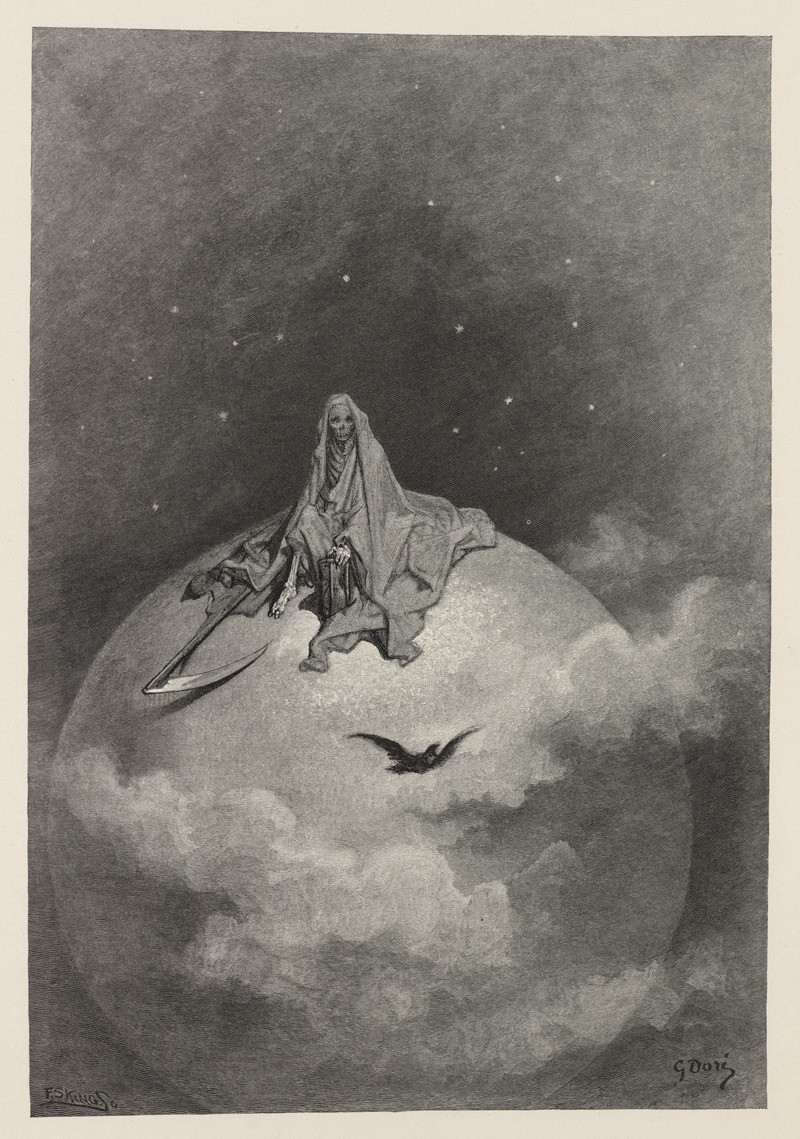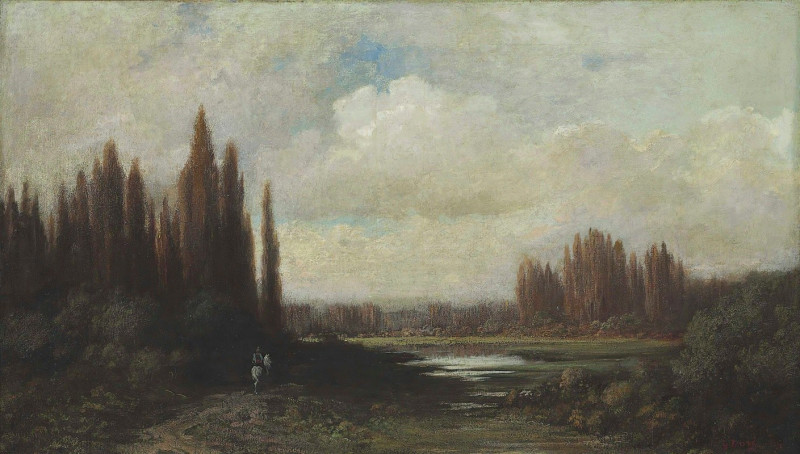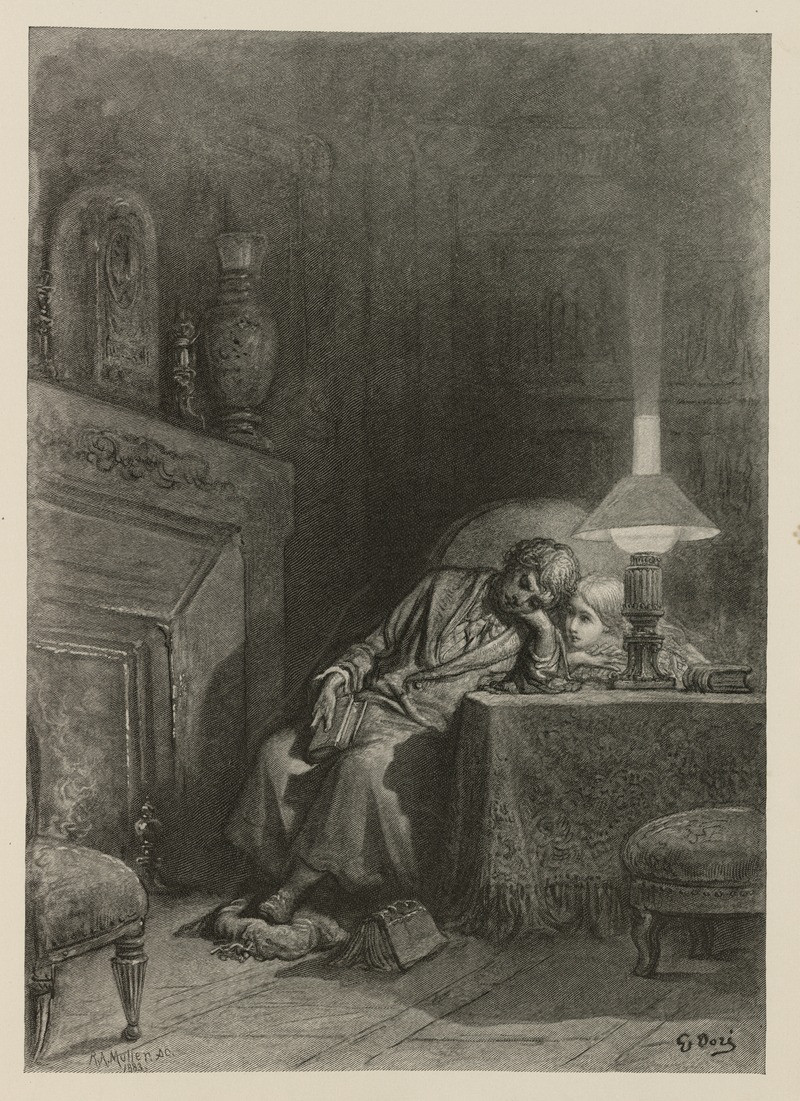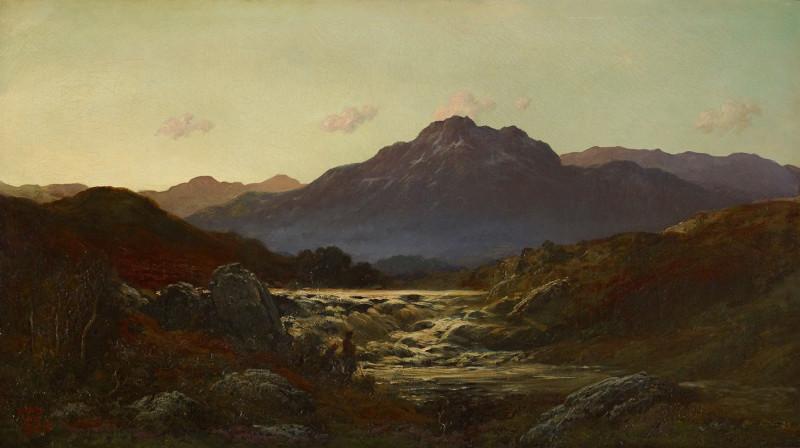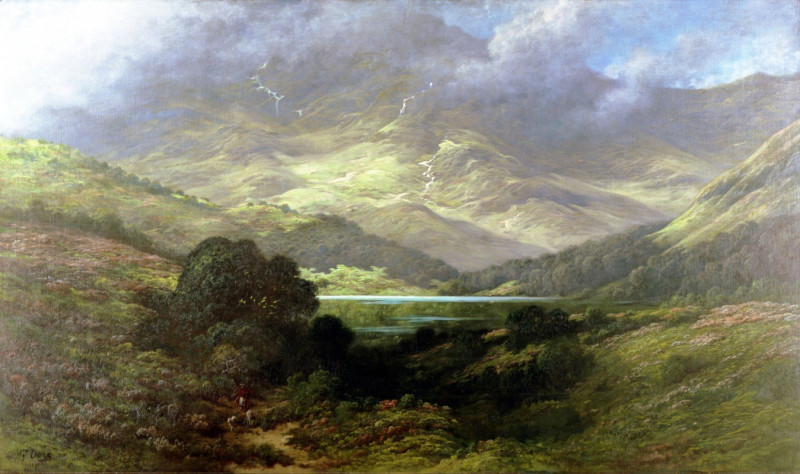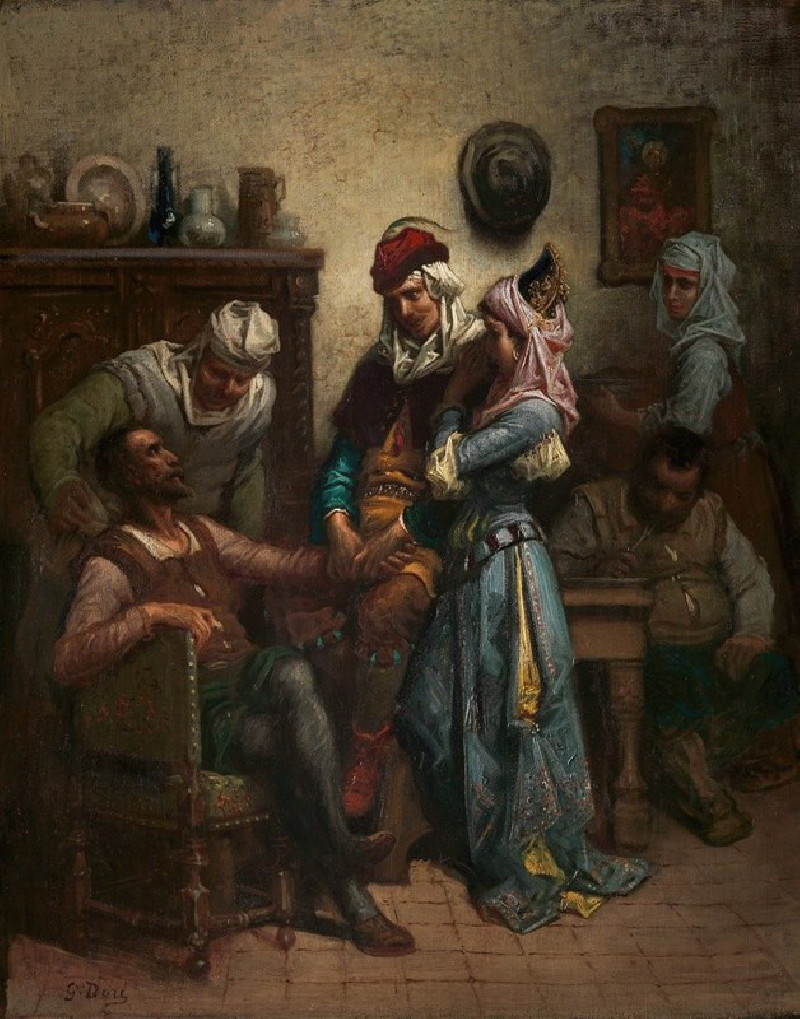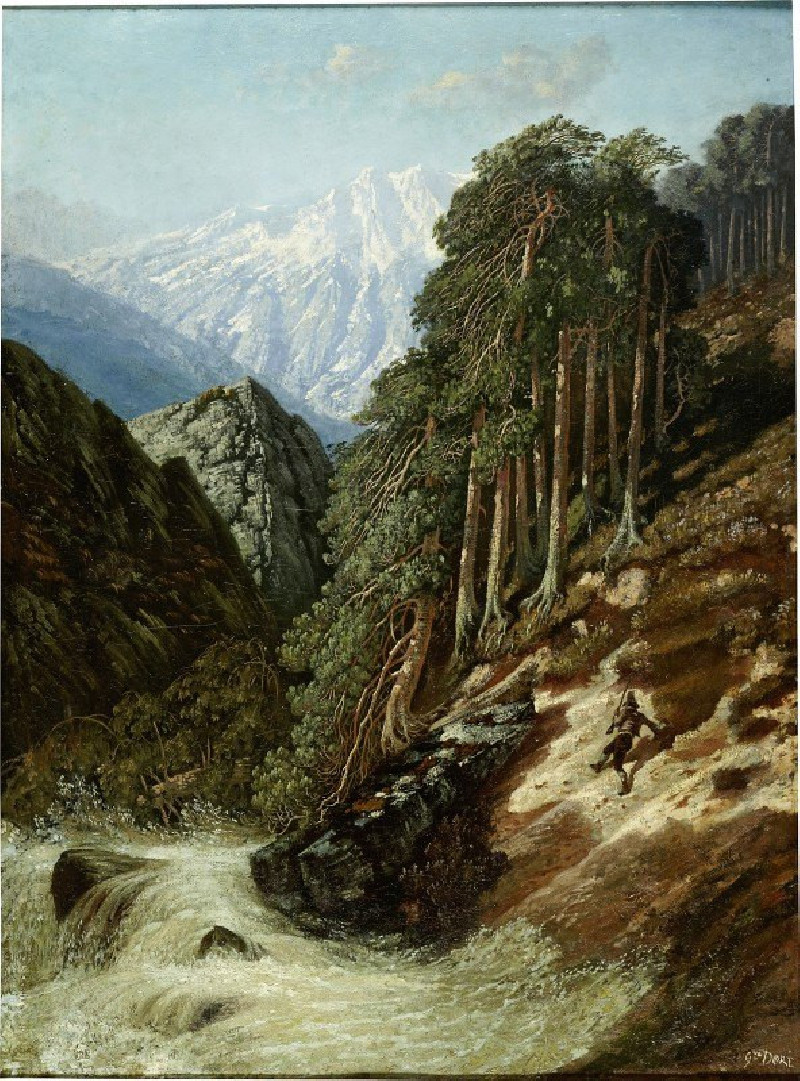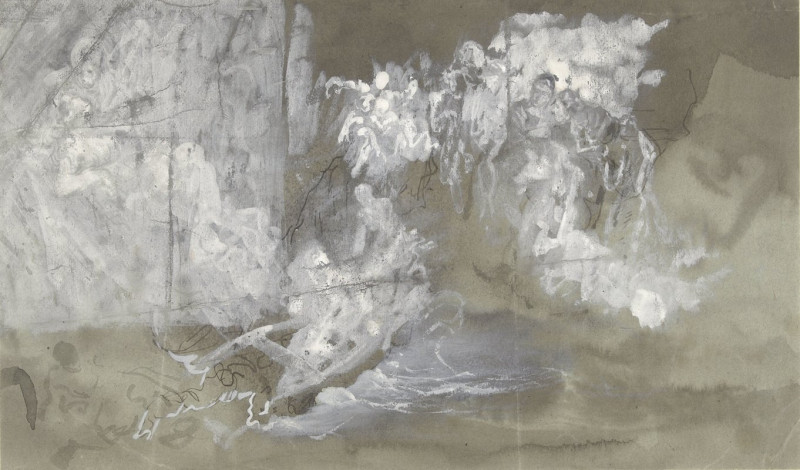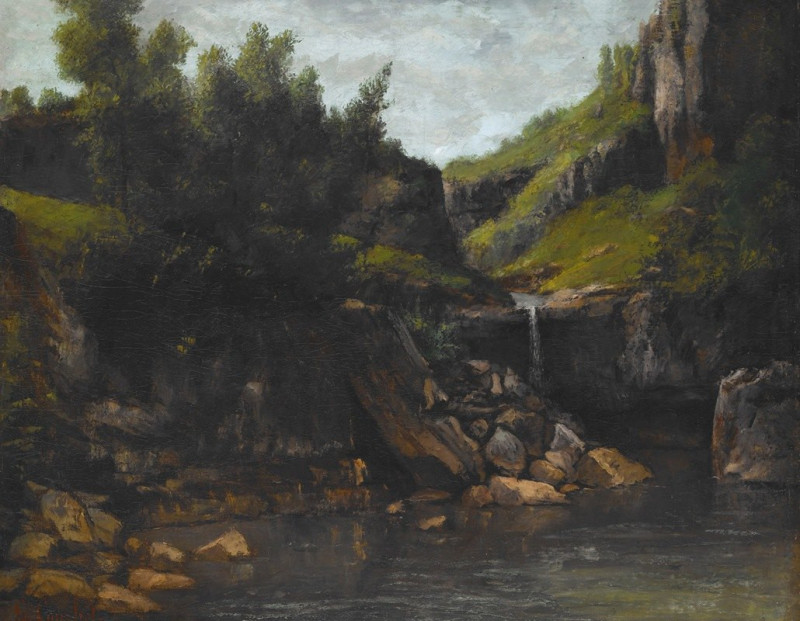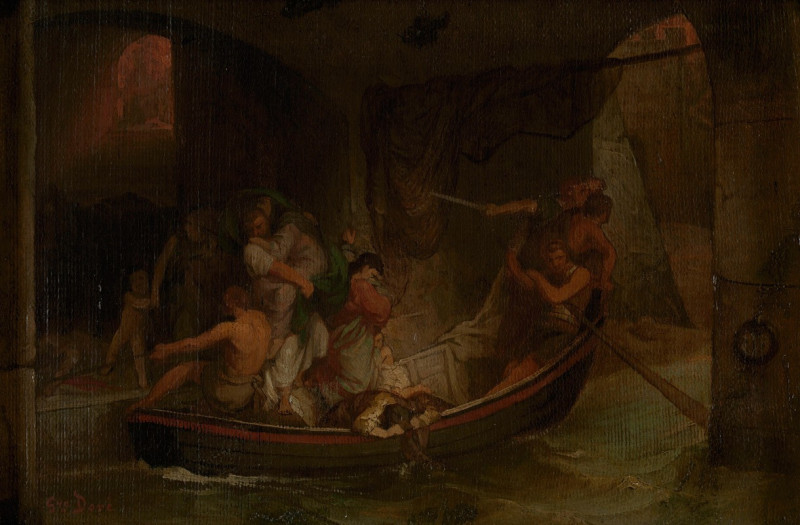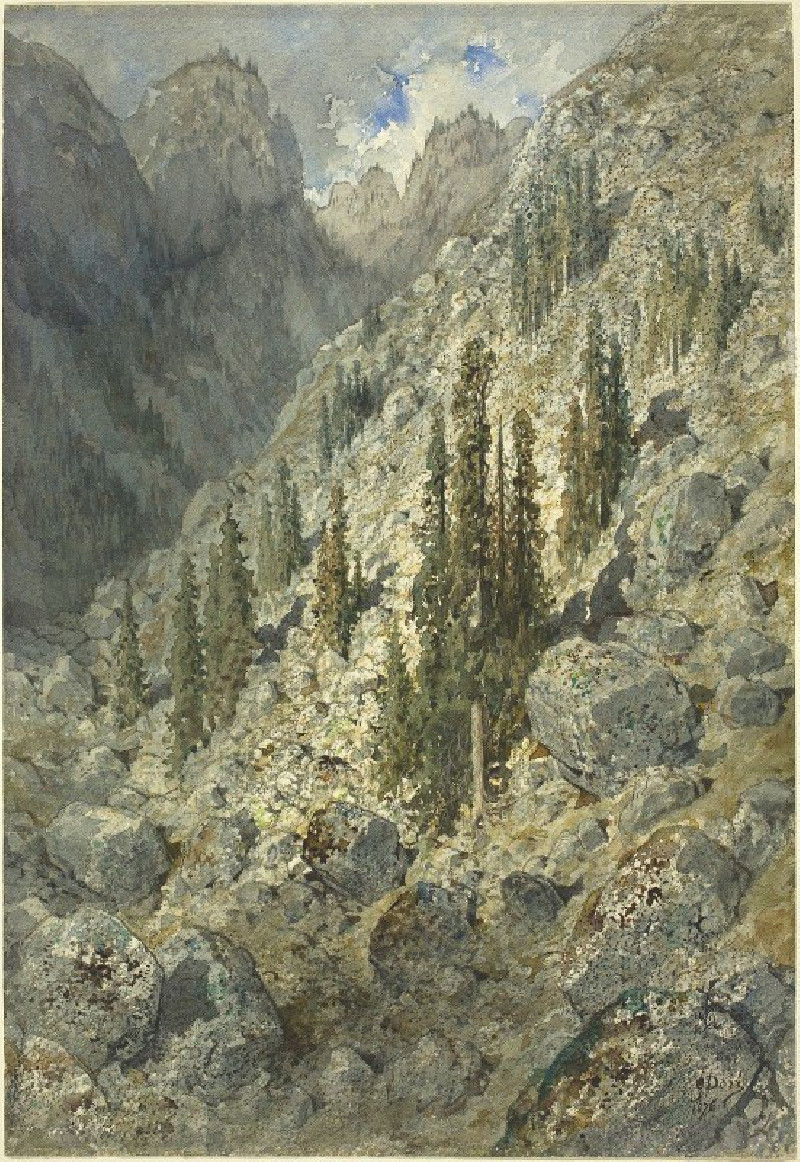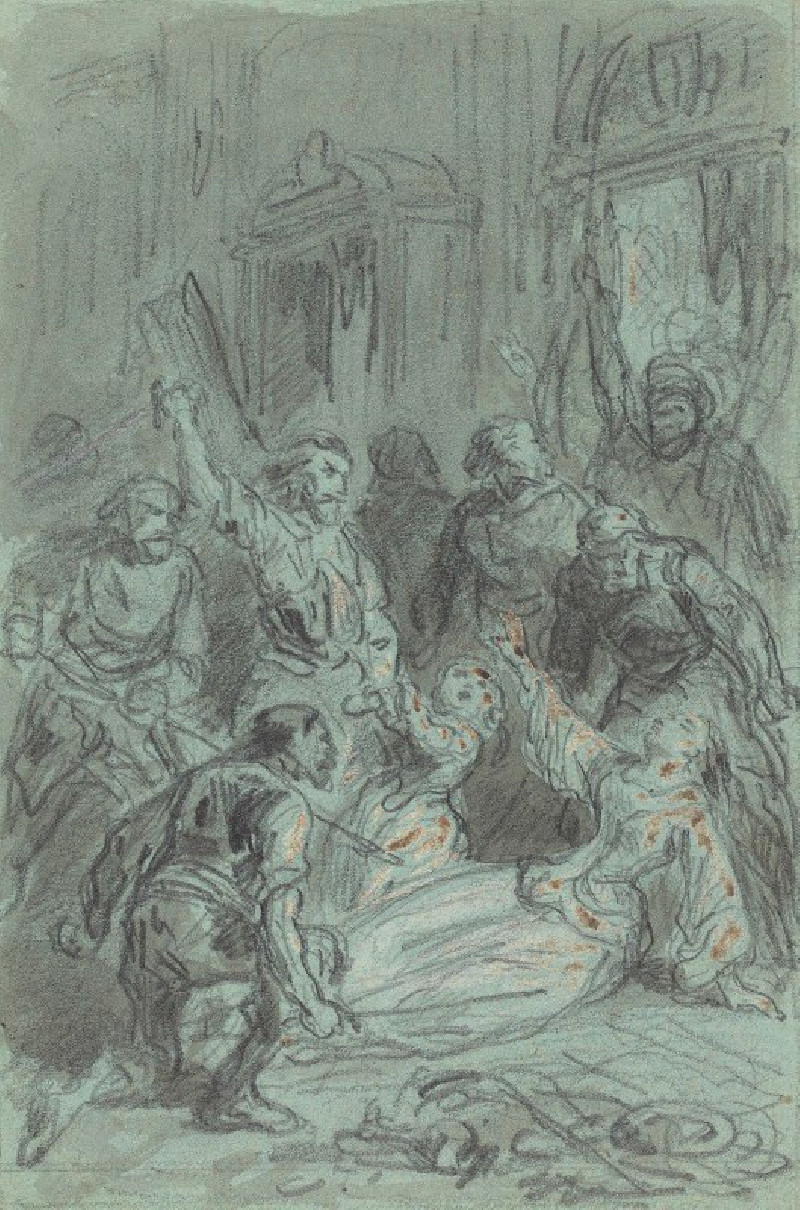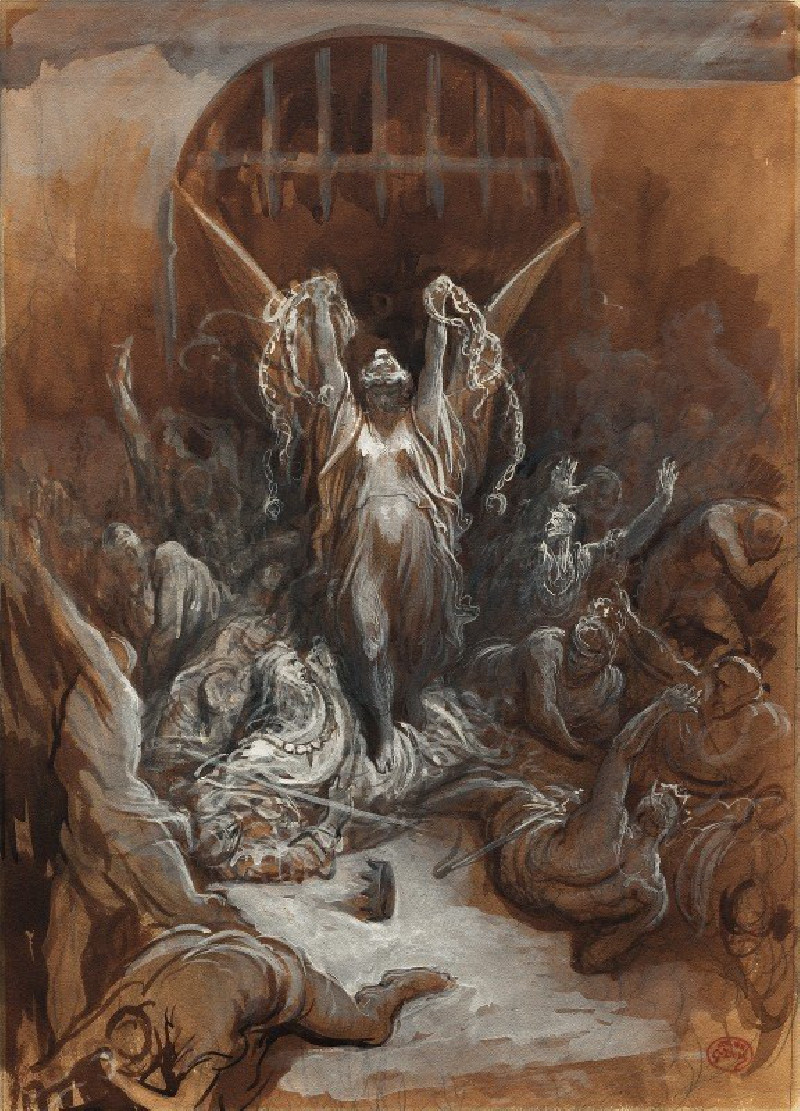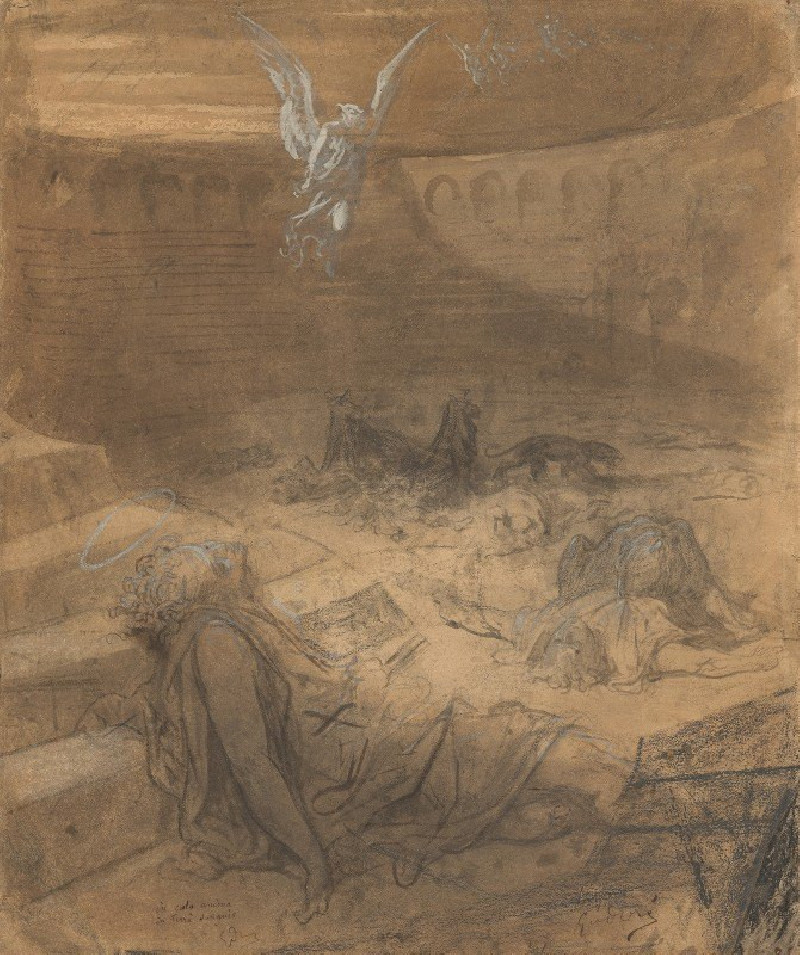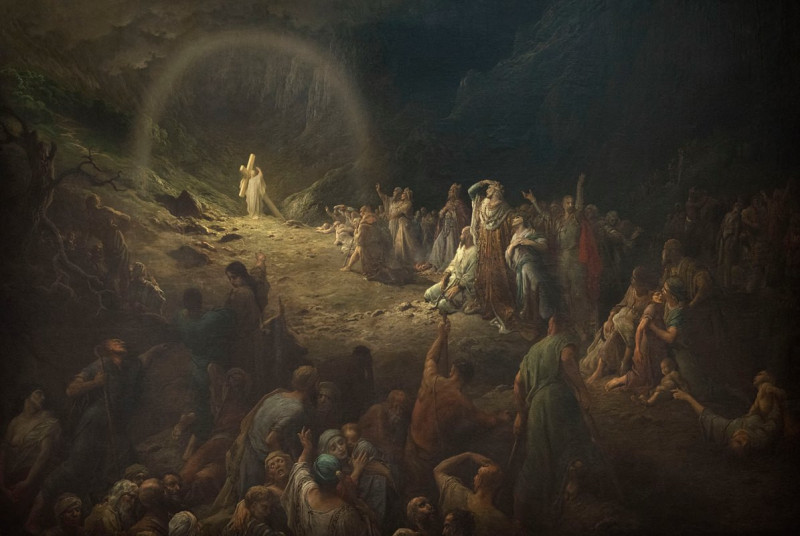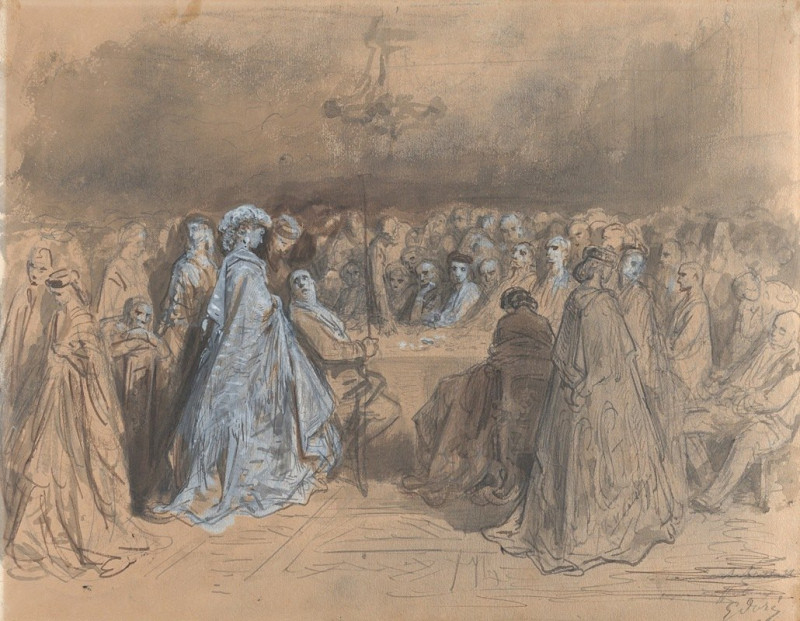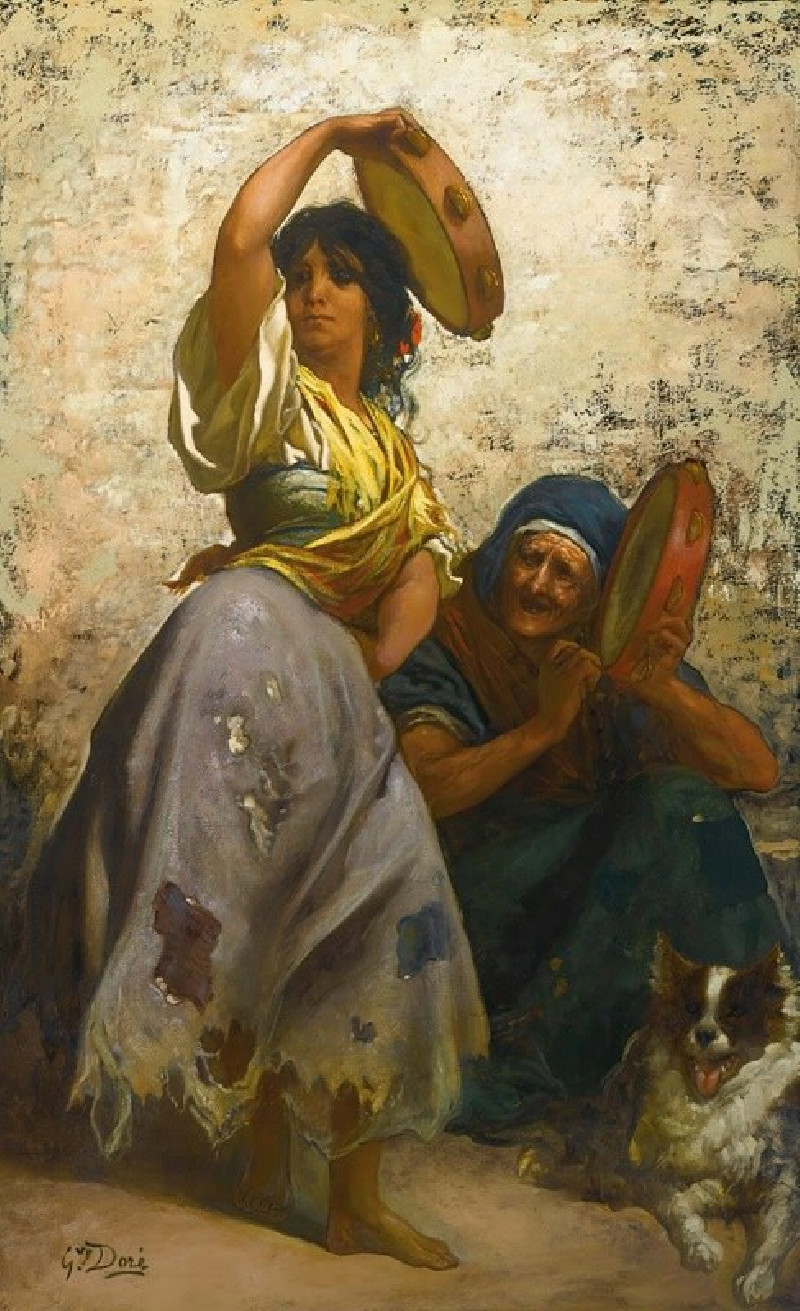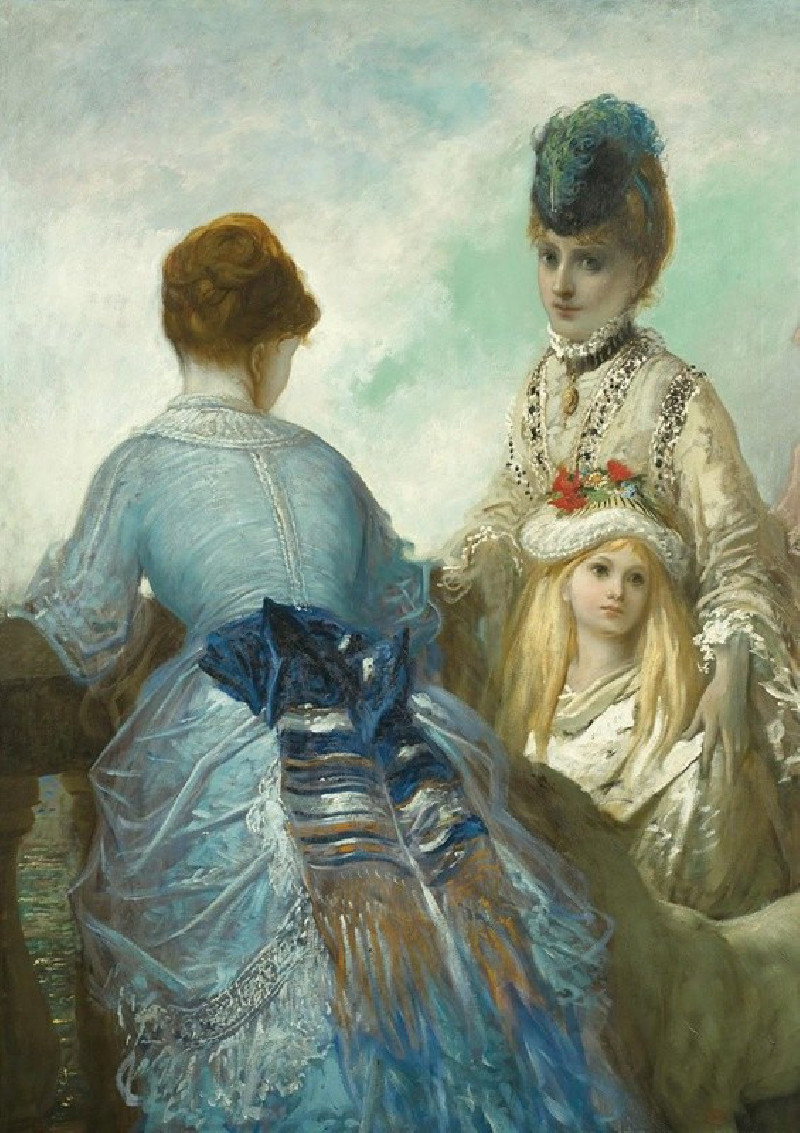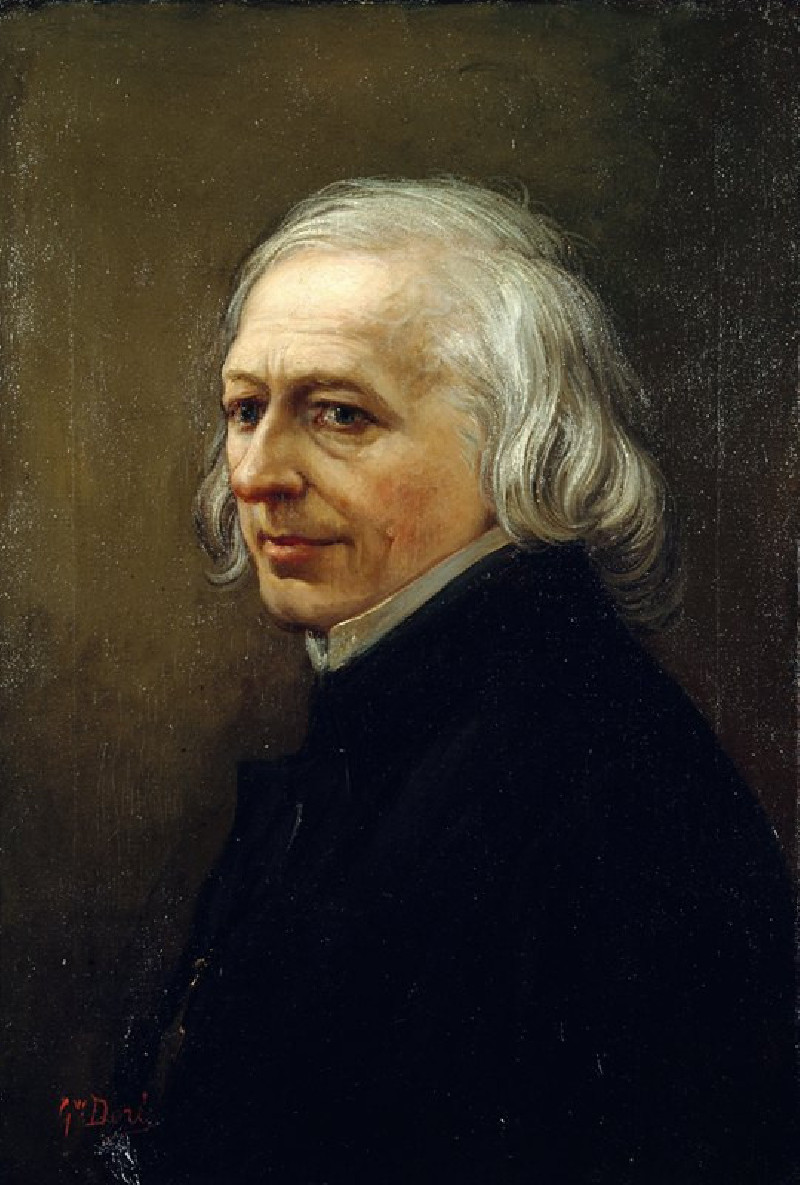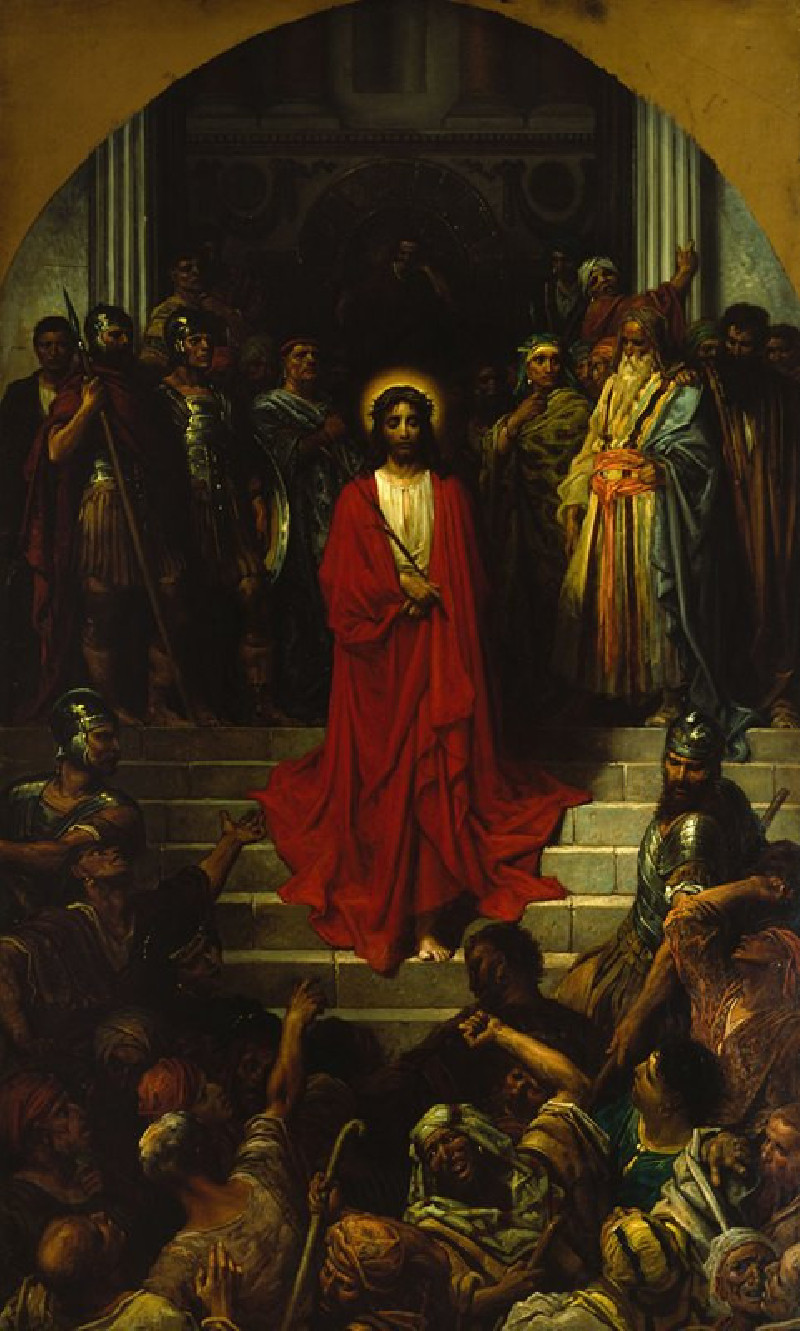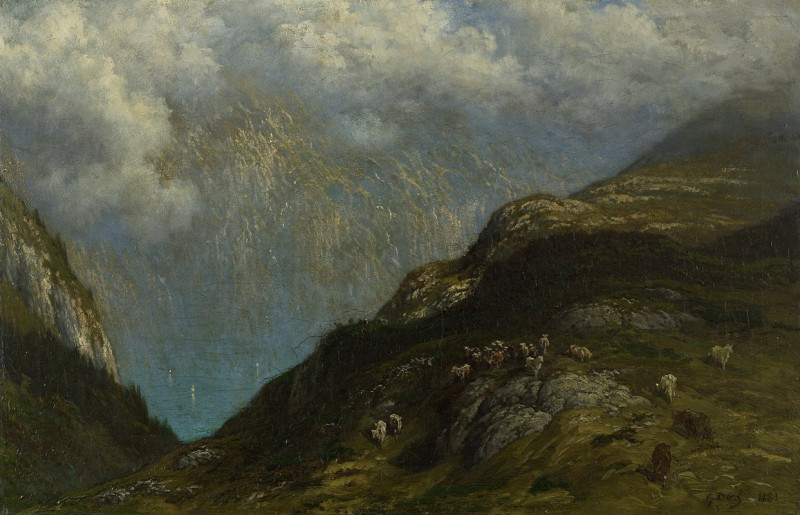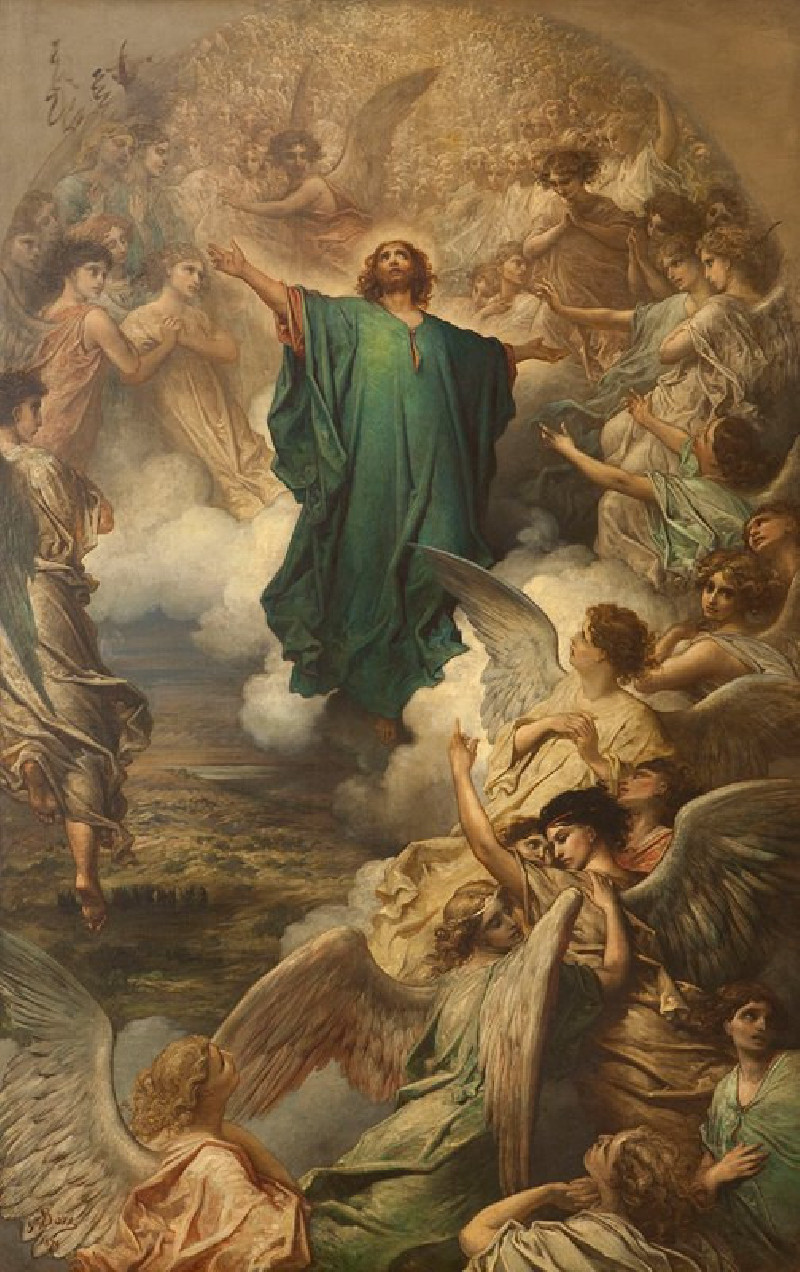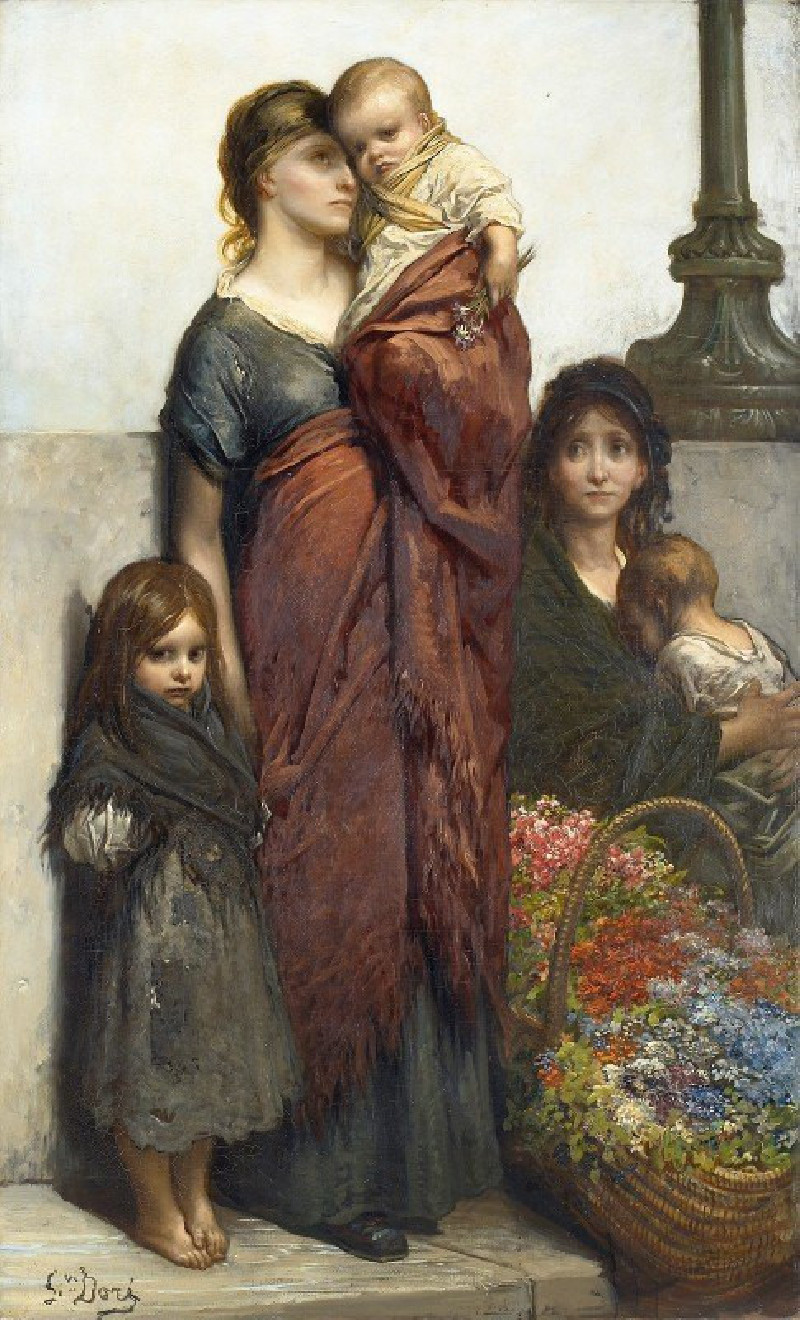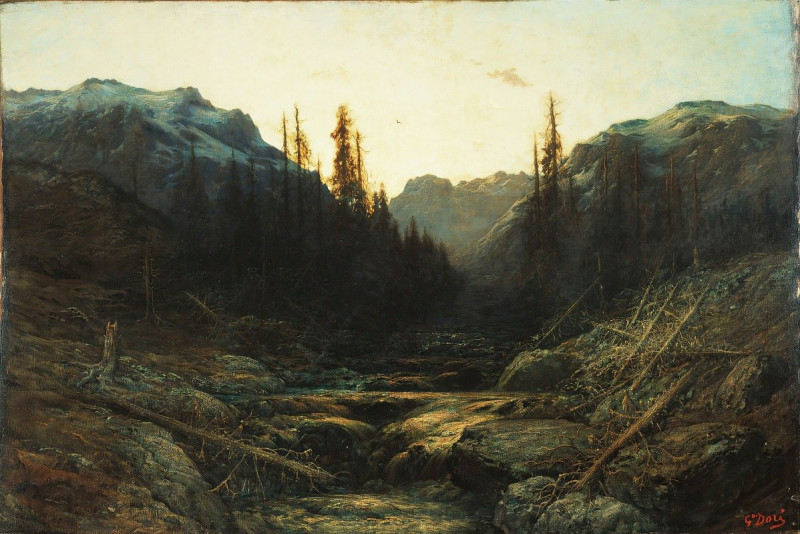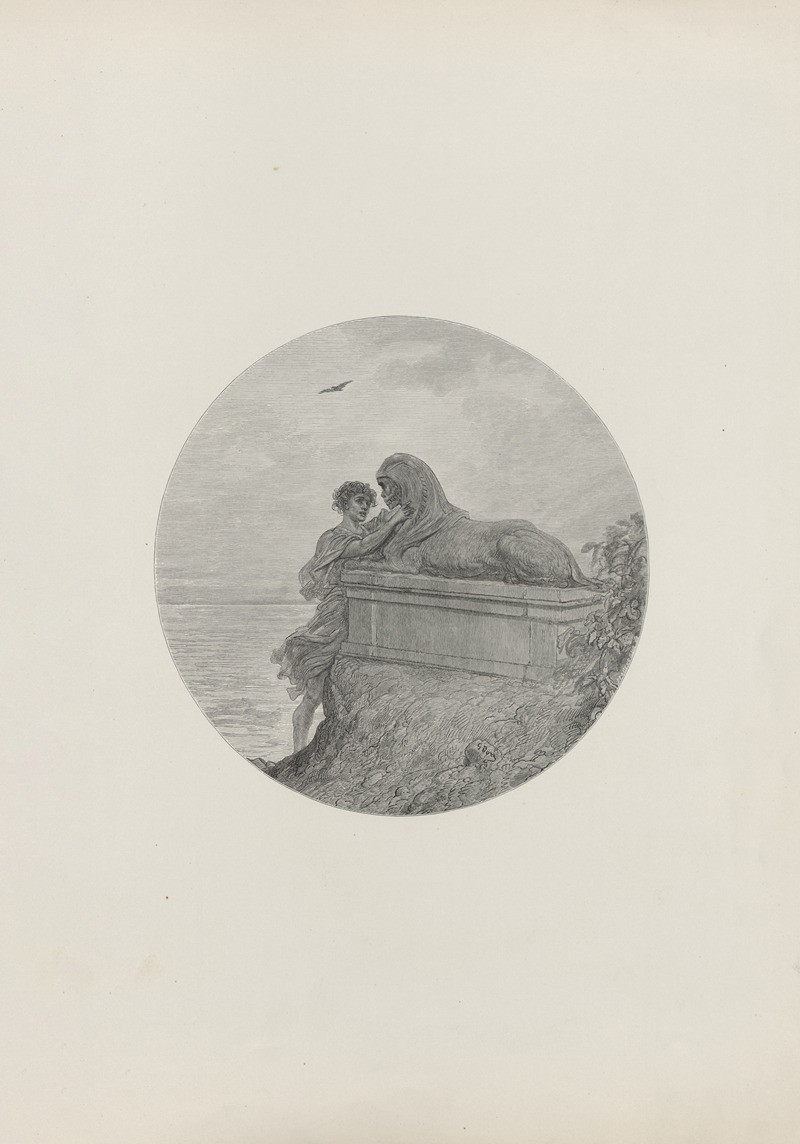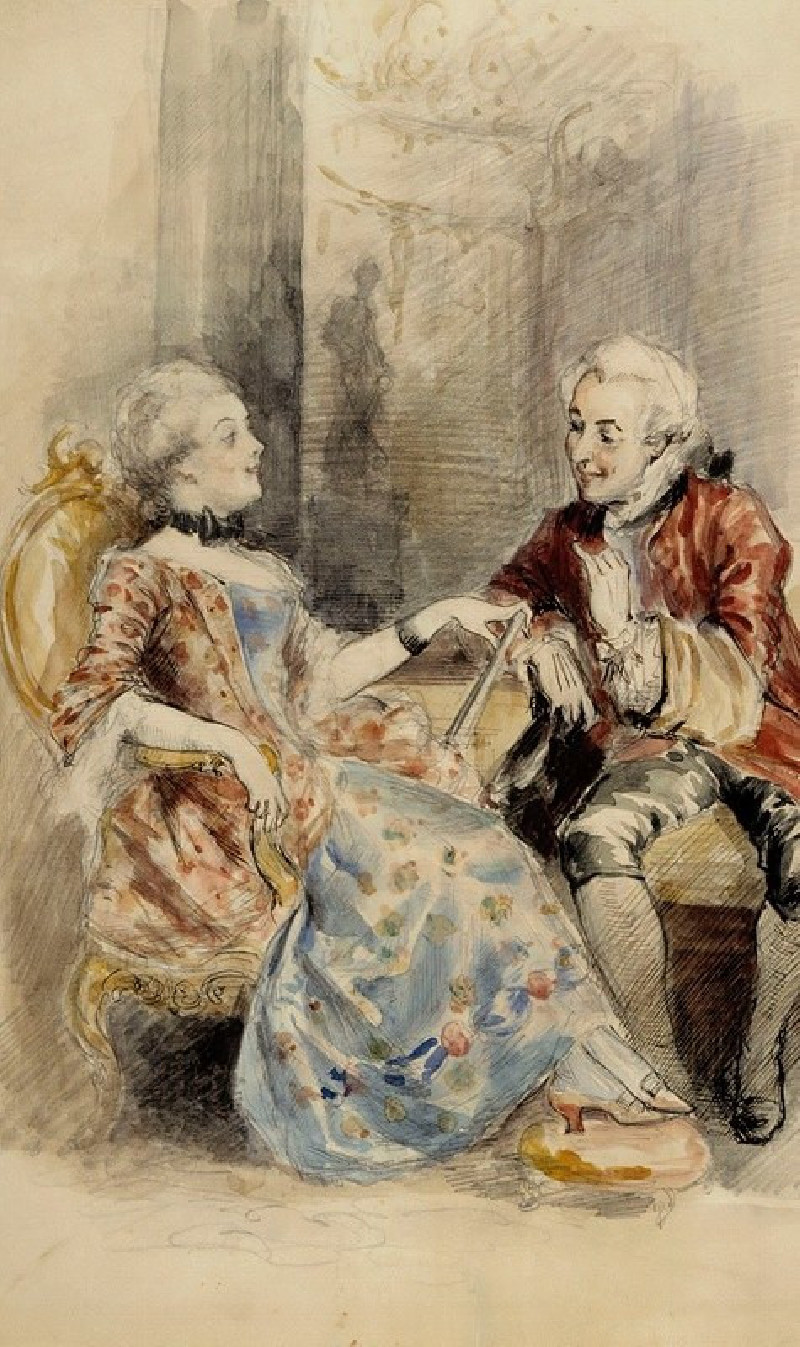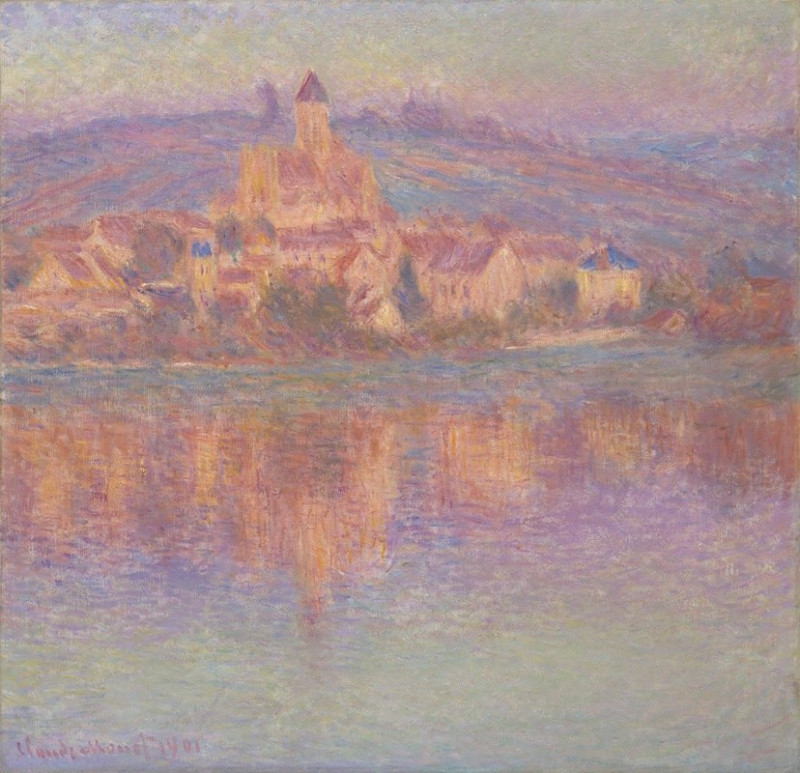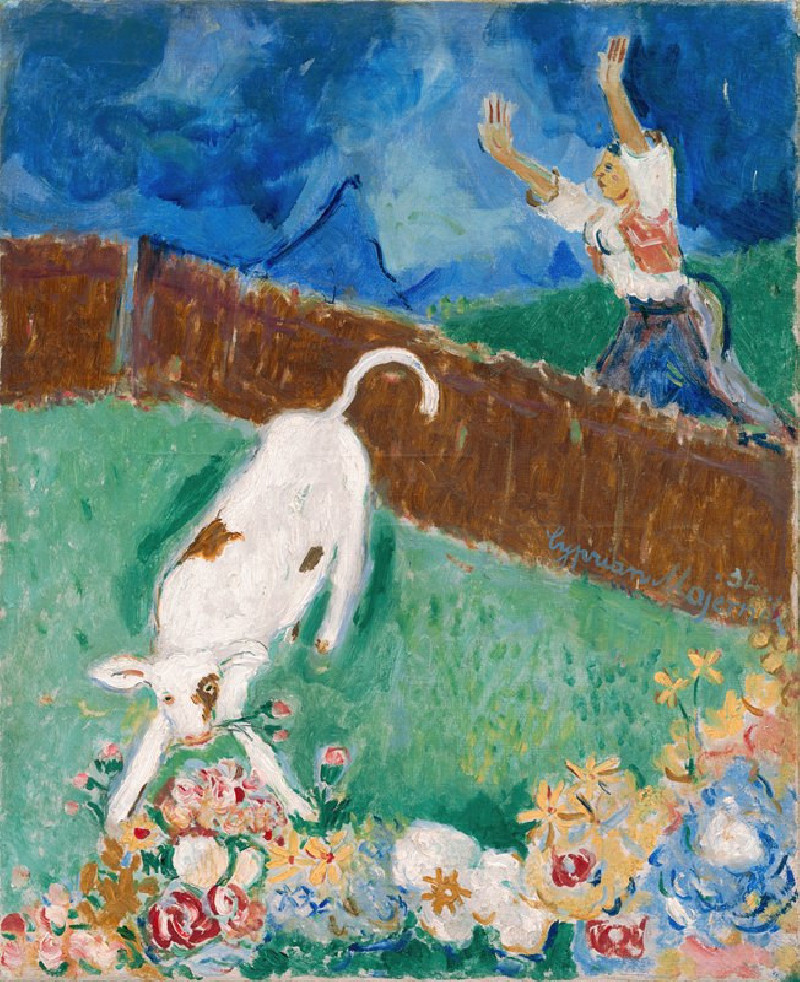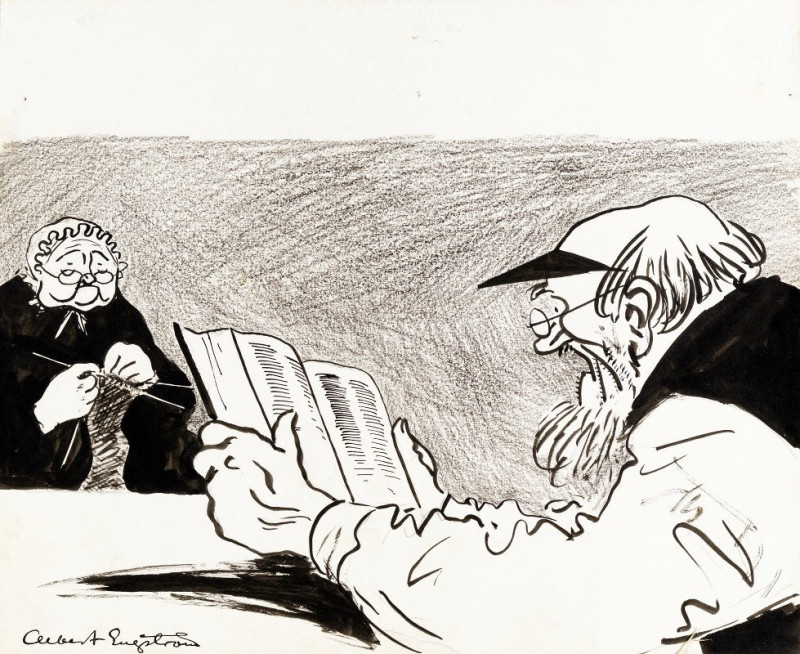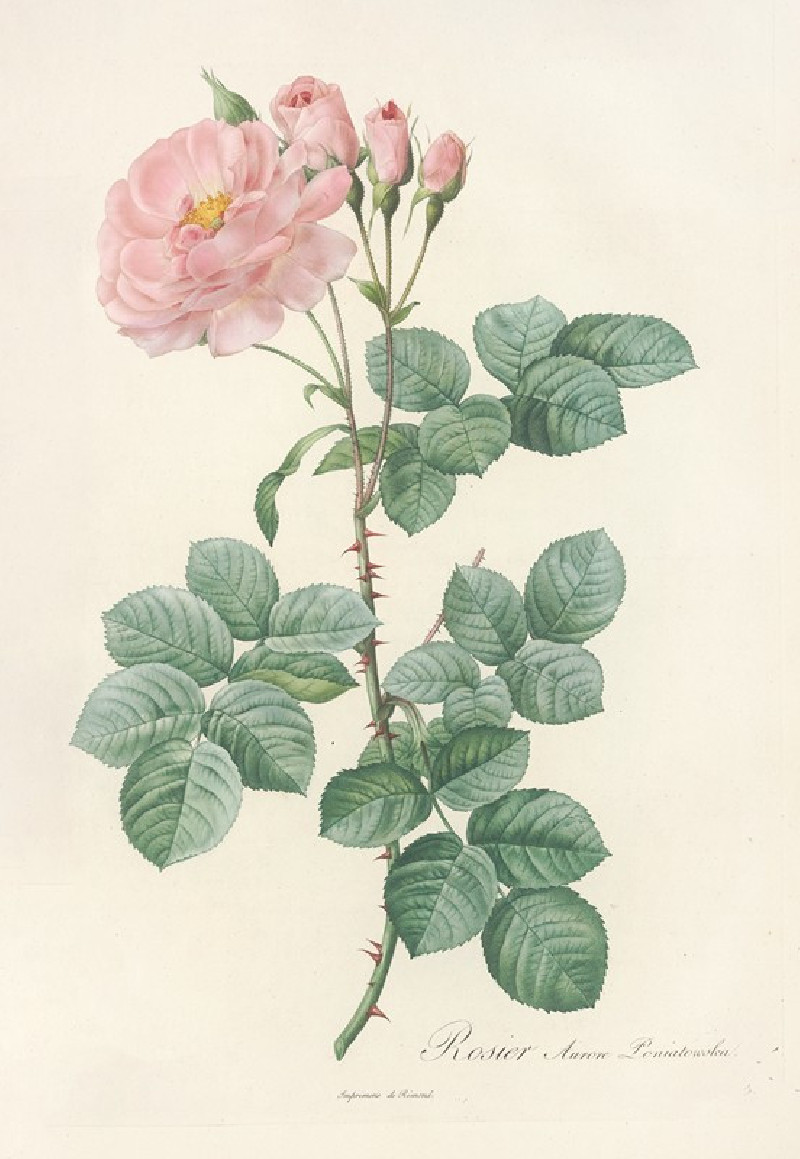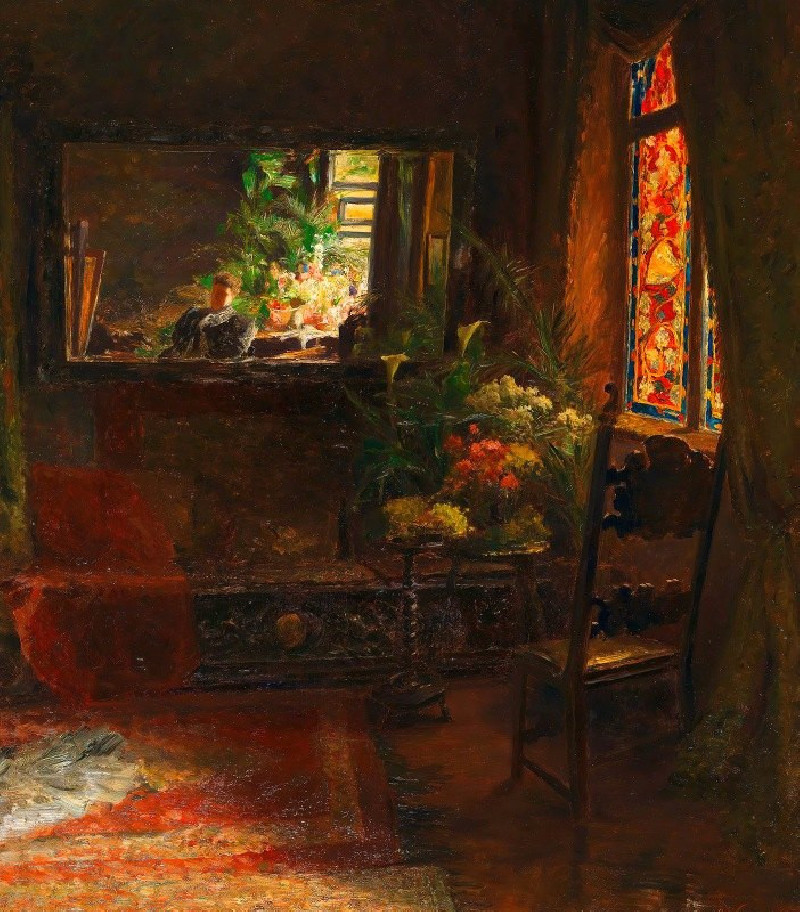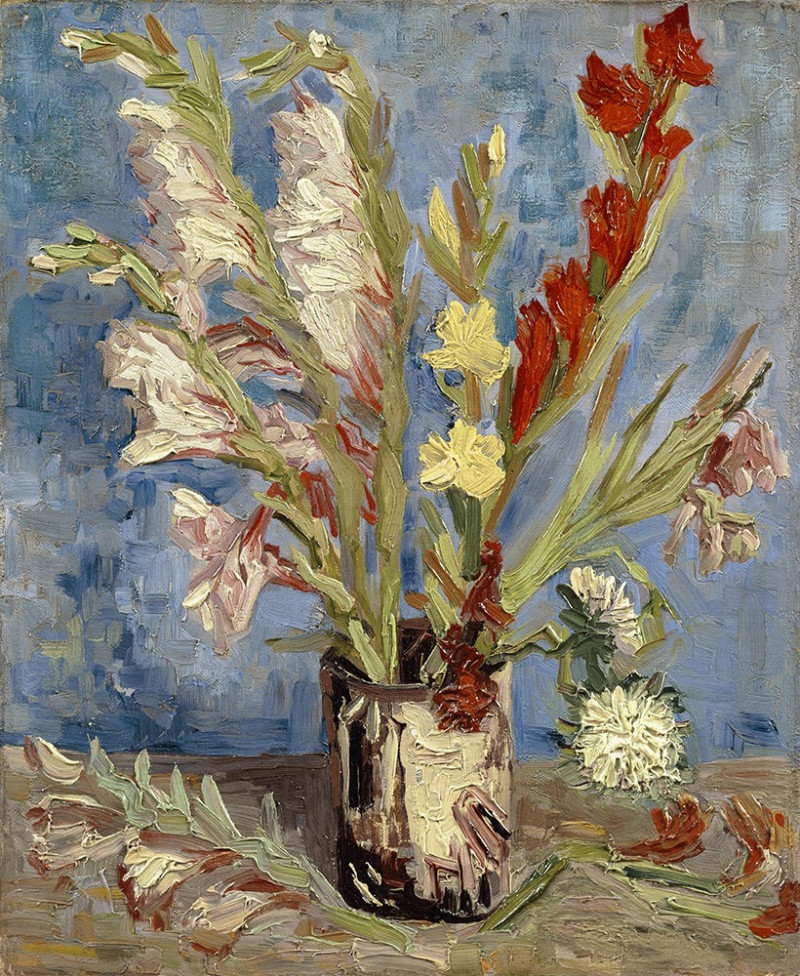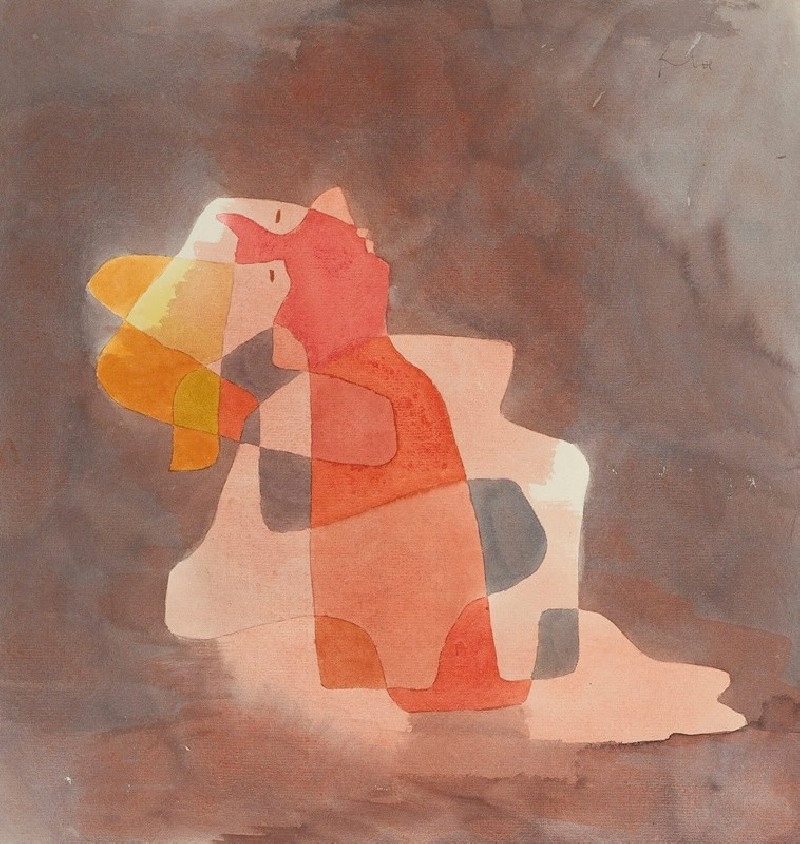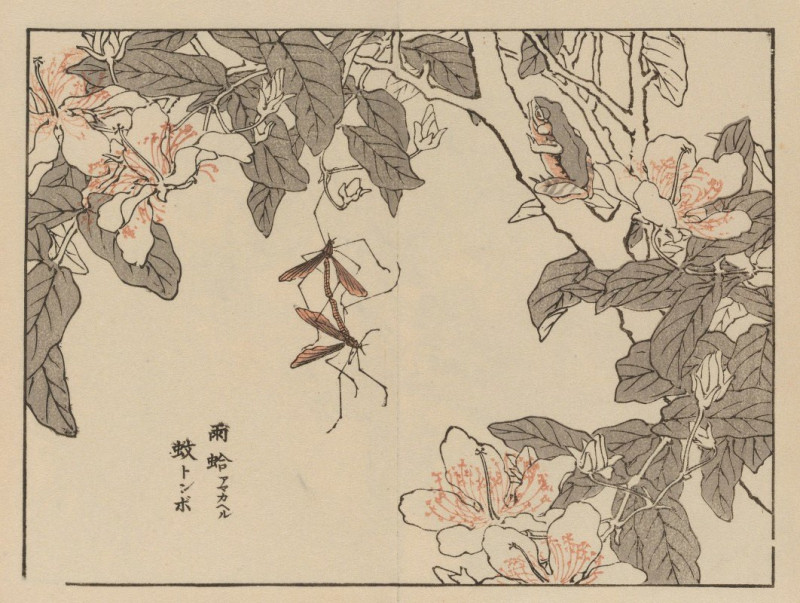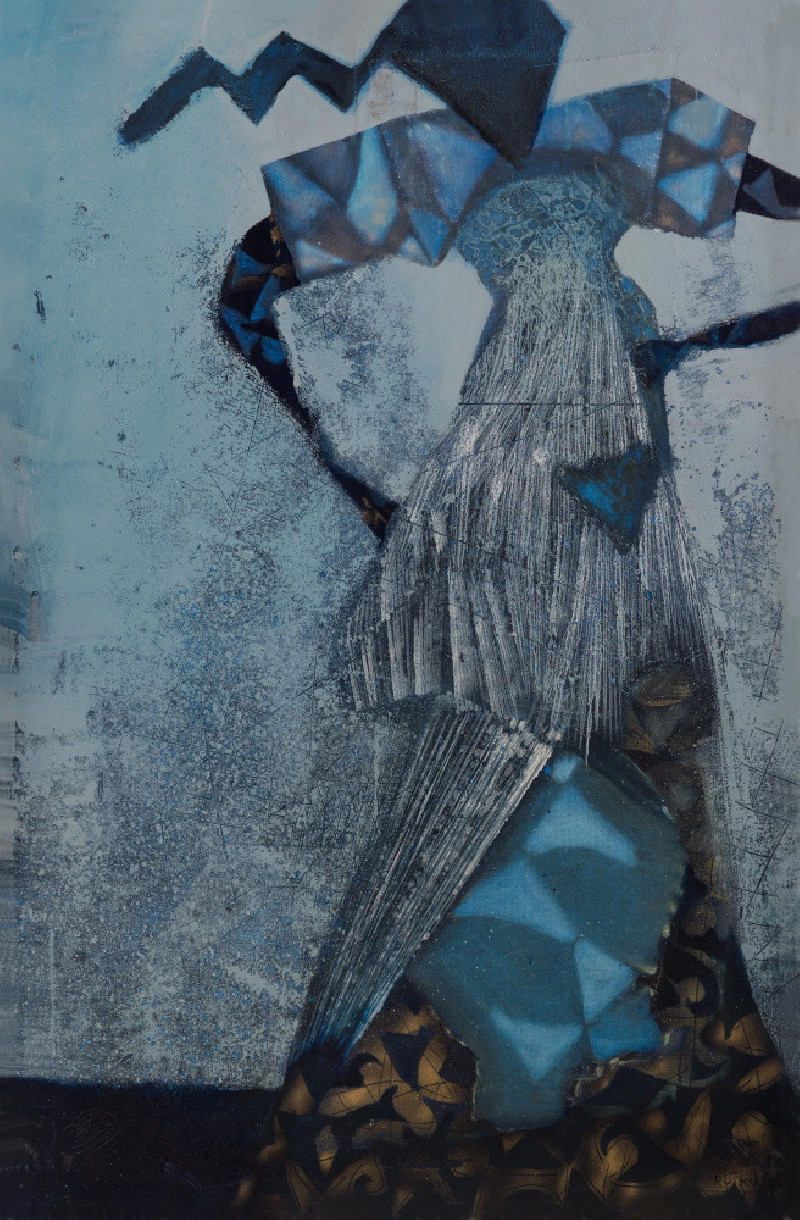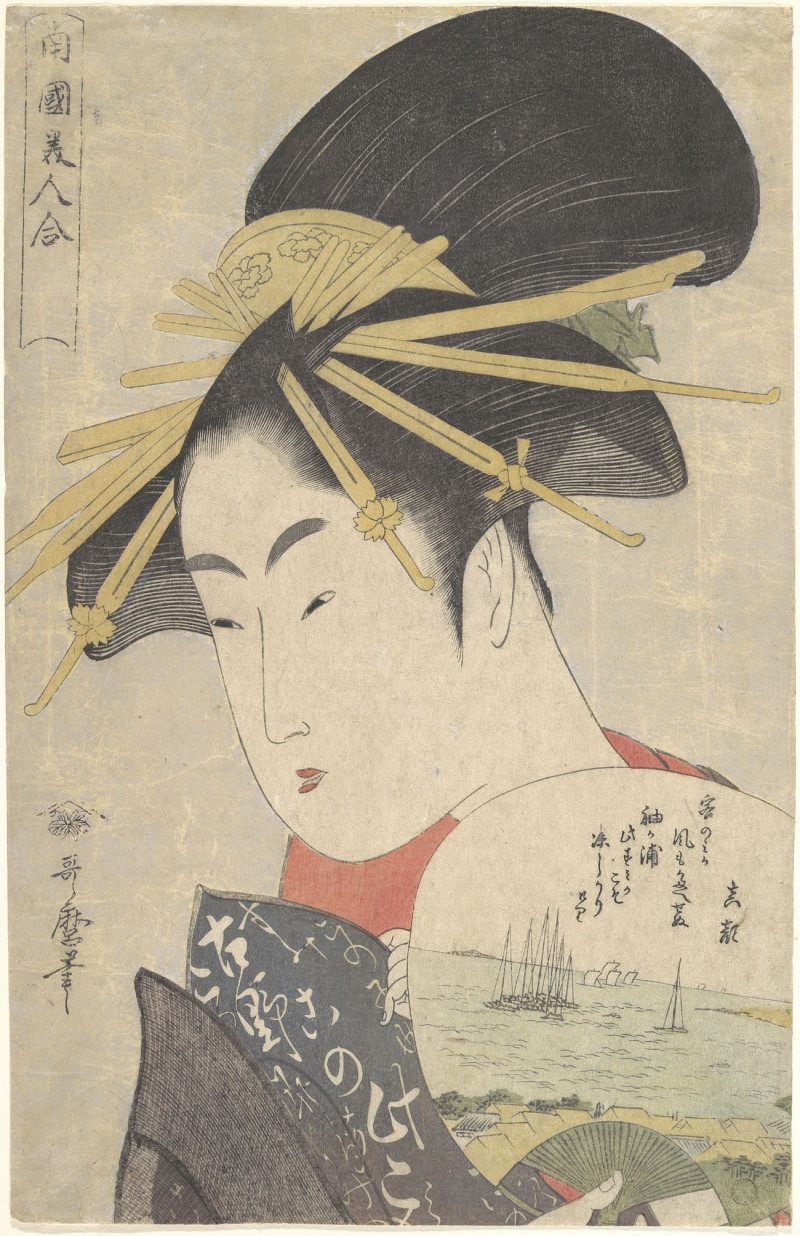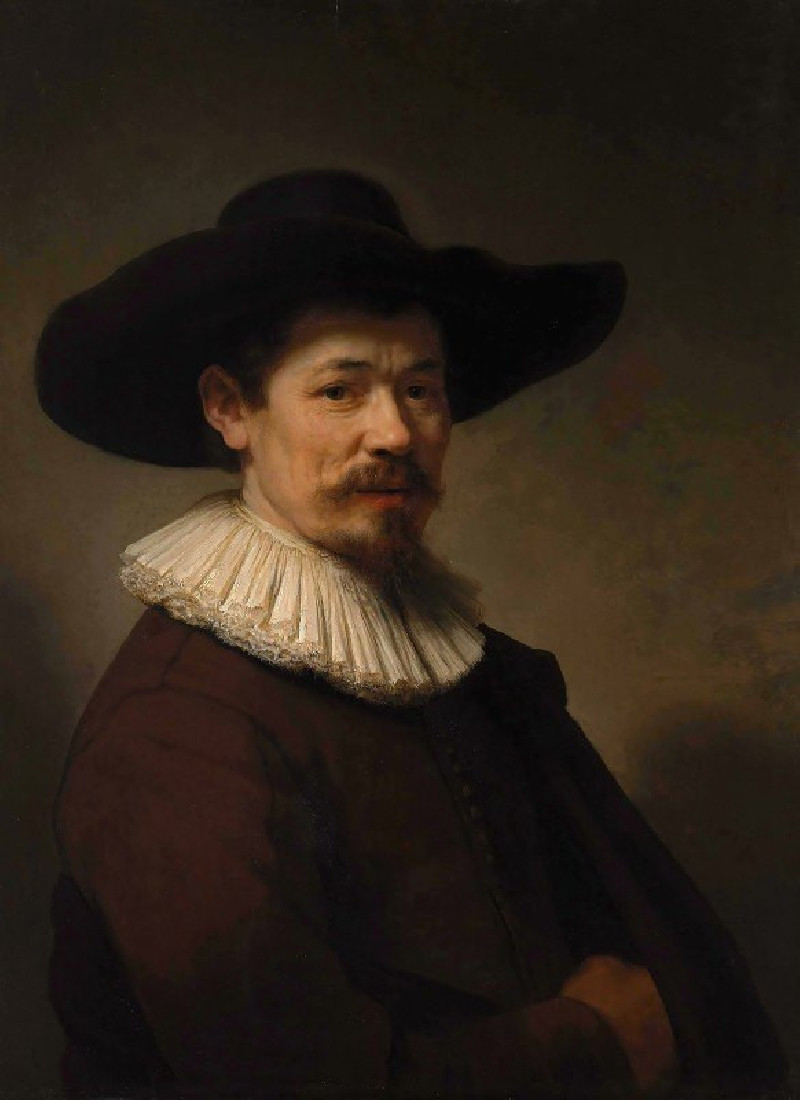The Raven Pl.10 (1884)
Technique: Giclée quality print
Recommended by our customers
More about this artwork
10" (1884)Gustave Doré's remarkable engraving, titled "The Raven Pl.10," invites viewers into a world shrouded in mystery and ethereal beauty. Created in 1884, this piece is part of Doré's illustrations for Edgar Allan Poe’s "The Raven," a poem renowned for its exploration of grief and melancholy.The artwork features a solitary, cloaked figure seated atop a pallid, moon-like sphere. This sphere, textured with wispy clouds, seems to float amidst a star-studded sky, enhancing a sense of otherworldly isolation. The figure, draped in flowing robes, exudes a ghostly presence, evoking themes of mourning and eternal solitude indicative of Poe's poetry.Adding a dynamic element to this serene yet somber tableau is a raven in flight, descending towards the mysterious realms below. Commonly recognized as a symbol of death and the macabre, the raven enhances the gothic atmosphere and prompts contemplation on the darker, inexorable truths of human existence.Doré's mastery in crafting atmospheric depth and detailed textures comes to the forefront, as he skillfully plays with light and shadow to underscore the haunting, contemplative mood of the scene.This illustration is not merely an artistic interpretation but an invitation to delve into the layers of human emotion and the universal experiences of loss and remembrance, making "The Raven Pl.10" a timeless piece that resonates with audiences across generations.
Delivery
Returns
Paul Gustave Louis Christophe Doré (6 January 1832 – 23 January 1883) was a French printmaker, illustrator, painter, comics artist, caricaturist, and sculptor. He is best known for his prolific output of wood-engravings illustrating classic literature, especially those for the Vulgate Bible and Dante's Divine Comedy. These achieved great international success, and he became renowned for printmaking, although his role was normally as the designer only; at the height of his career some 40 block-cutters were employed to cut his drawings onto the wooden printing blocks, usually also signing the image.

